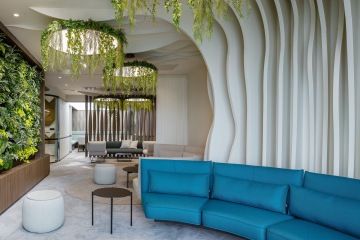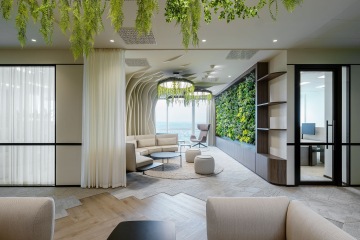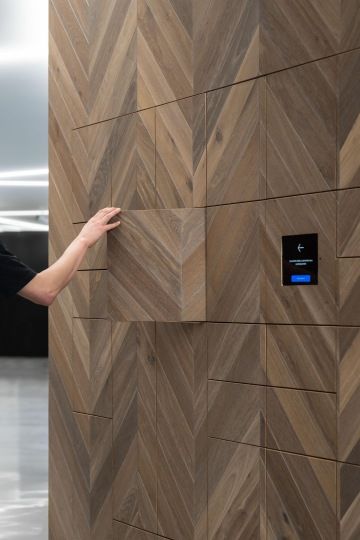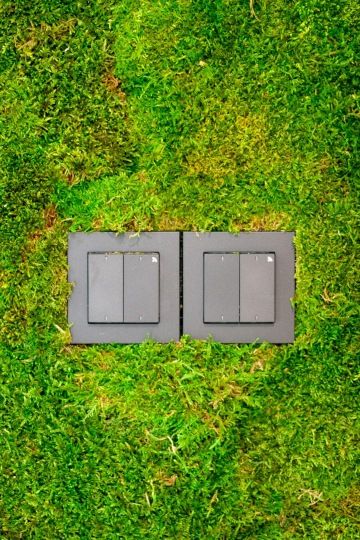Commercial interior trends for 2025: Sustainability, technology and flexibility
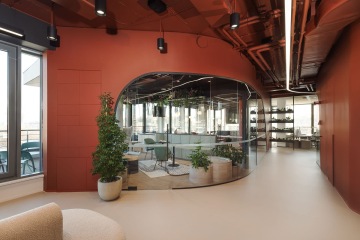
The year 2025 is here and with it new challenges and opportunities for commercial interiors. Key themes include sustainability, the implementation of modern technology, the transformation of the working environment and an increasing focus on employee well-being. What trends will dominate? We present insights and expert perspectives on a few selected areas.
Sustainability: more than just a buzzword

New materials made from recycled or natural sources, such as glass, plastics, or textiles, will play an increasingly important role. Companies are looking for solutions that are not only aesthetic but also environmentally friendly.
Sustainability stays at the forefront, influencing both the design and operation of commercial spaces. At the same time, there is an increasing emphasis on the circular economy and certifications such as WELL or LEED. These are becoming standard even for smaller companies.
"Sustainability is a priority for us. Our projects reflect the need for long-term and environmentally friendly solutions." Andrle adds.
Technology for efficiency and comfort
Modern technology is changing the way we perceive and use workspaces.
But technology integration is not just about lighting. Natallia Zubrytskaya, sales manager at Spanish furniture company Actiu, points out:

There is an increasing focus on linking technology with furniture. Multi-functional and tech-enabled pieces that enhance comfort and connectivity will be a must.
Workplace flexibility as the new norm
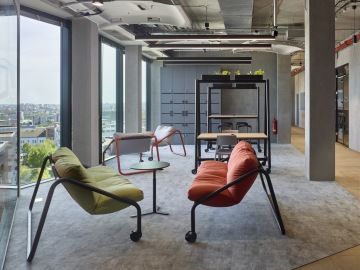
The pandemic has accelerated the transformation of the work environment towards greater flexibility. Zdenka Studená, managing partner at FLEXJOBS Consulting, says: "Flexible working conditions, such as working from home or part-time, are becoming the norm. This change places new demands on office design, which needs to be adaptable and easy to modify."
Jan Andrle adds: "Modular furniture solutions allow for quick changes to layouts and meet sustainability requirements. We are replacing fixed partitions with mobile systems that can be easily reconfigured."
Employee well-being: the key to productivity
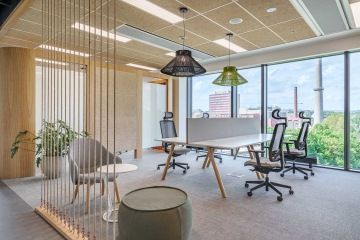
Employee health and well-being are a priority, which is reflected in the interior design. Andrle points out the importance of light quality: "Office lighting should be adaptable and support the natural biorhythm. Indirect light and colour adaptation during the day greatly improve the working environment."
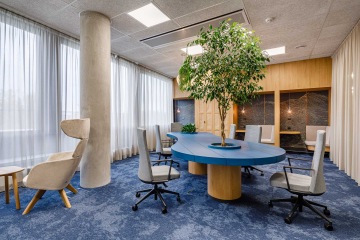
Natallia Zubrytskaya, for her part, stresses the importance of natural materials and connecting interiors with nature: "This trend is not only aesthetic, but also promotes ecological responsibility." It's no great surprise then that it is this connection with natural elements that contributes to the mental well-being of office users.
What are the companies planning for the future?
All companies interviewed are preparing for a future that will require more efficient and sustainable approaches.
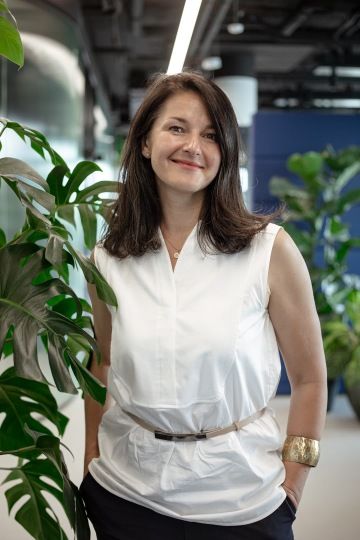
We are working on several total HR transformation projects in companies that are coming up with new AI-based tools. For next year, we are planning to accelerate and expand our activities with the team.

We will continue to invest in technology innovation and expansion. Our goals for 2025 include not only revenue growth, but also further reducing our carbon footprint through sustainable projects.
The year 2025 will be marked by the transformation of commercial interiors. Sustainability, technology and flexibility will be the main pillars on which companies will build.
As Ing. Jan Půlpytel: "The goal is efficiency, convenience and minimizing environmental impact." This approach is not only a response to current challenges, but also a demonstration of a vision to create spaces for the future.
Authors of the photos: Foto Studio Flusser, Michaela Bursíková, Martina Prášková, Prokop Laichter, Petr Andrlík, Tomáš Havel
Published: 6. 1. 2025
